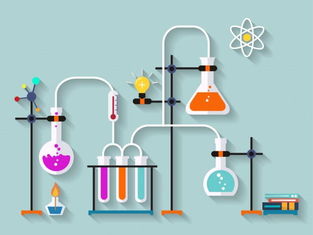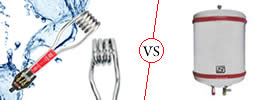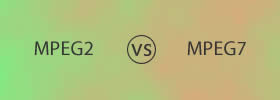Difference Between Separation and Extraction
Key Difference: Extraction is a method used for the separation of organic compound from a mixture of compound. This technique selectively dissolves one or more compounds into an appropriate solvent. Whereas separation process is a method that converts a mixture or solution of chemical substances into two or more distinct product mixtures. At least one of results of the separation is enriched in one or more of the source mixture's constituents.
Separation
Separation is a procedure that changes the general measures of substances in a blend. In compound strategies, one may begin with a totally homogeneous blend or a heterogeneous sample ; in the demonstration of partition, a few particles are either in part or completely expelled from the example”
In our surrounding most of the materials are mixtures of two or more components. Mixtures are either homogeneous or heterogeneous. Where homogeneous mixtures are uniform in composition, heterogeneous mixtures lack uniformity in their composition.
 Air is a homogeneous mixture and oil in water is a heterogeneous mixture.
Air is a homogeneous mixture and oil in water is a heterogeneous mixture.
Separating the constituents of the mixtures, makes it easier to find out and understand the properties of the known/unknown substances from mixtures. And this advantage allows one to possibly use them for the production of useful substances such as medicines.
Depending on the physical and chemical properties of the substances in the mixture, the most appropriate separation technique is chosen to isolate them from the mixture.
Reasons for making separation
There are two general purposes behind performing separation on blends. To start with, the blend may contain some substance that ought to be disconnected from whatever is left of the blend: this procedure of confining and along these lines expelling substances viewed as contaminants is called filtration. For instance, in the fabricate of engineered medications, blends containing variable extents of a few mixes generally emerge. The expulsion of the ideal medication from whatever remains of the blend is critical if the item is to have uniform power and is to be free of different segments that might be risky to the body.
The second explanation behind performing separation is to change the piece of an example with the goal that at least one of the segments can be dissected. For instance, the examination of air poisons to evaluate the nature of the air is of incredible intrigue, yet a significant number of the toxins are at a focus unreasonably low for direct investigation, even with the most delicate gadgets. Toxins can be gathered by passing examples of air through a cylinder containing an adsorbent material. By this procedure the contamination are concentrated to a dimension with the end goal that clear examination and observing can happen. In a second model, a few contamination in an example may meddle with the examination of the substance of essential intrigue. In this way, in the investigation of follow convergences of metals in waterways, natural substances can cause incorrect outcomes. These obstructions must be expelled preceding the investigation.
The choice of separation techniques is based on the type of mixture and difference in the chemical properties of the constituents of a mixture.
Various types of separation processes are:
- Crystallization
- Filtration
- Decantation
- Sublimation
- Evaporation
- Simple distillation
- Fractional distillation
- Chromatography
- Centrifugation
- Separating funnel
- Magnetic separation
- Precipitation
Extraction
Extraction is a procedure used to expel an ideal compound from a solid or a liquid blend utilizing an appropriate solvent. It is never conceivable to totally extract or expel a compound from a given solvent; ideally very little impurity will be left behind. There are three sorts of extraction; strong/fluid, fluid/fluid, and acid/base extraction. Strong fluid includes the expulsion of a substance from a natural product or solid mixture (for example heated water and tea/espresso). Fluid/fluid extraction involves the transfer of the ideal compound starting with one fluid then onto the next. As a rule, a substance is dissolvable in water, however considerably more solvent in an alternate dissolvable (generally natural) so the compound winds up disintegrated in the second natural dissolvable. Last is corrosive/base extraction in which a corrosive (H3O+) or base (OH-) is added to a blend making an undesirable impurity to react and turn into a solid. This strong is effectively filtered out.
 Extraction alludes to transference of compound(s) from a solid or fluid into an alternate solvent or phase. At the point when a tea pack is added to boiling water, the compounds in charge of the flavor and colour of tea are extricated from the grounds into the water. Decaffeinated espresso is made by utilizing solvents or supercritical carbon dioxide to extricate the caffeine out of espresso beans. Bakers utilize the concentrate of vanilla, almond, orange, lemon, and peppermint in their dishes, embodiments that have been removed from plant materials utilizing liquor.
Extraction alludes to transference of compound(s) from a solid or fluid into an alternate solvent or phase. At the point when a tea pack is added to boiling water, the compounds in charge of the flavor and colour of tea are extricated from the grounds into the water. Decaffeinated espresso is made by utilizing solvents or supercritical carbon dioxide to extricate the caffeine out of espresso beans. Bakers utilize the concentrate of vanilla, almond, orange, lemon, and peppermint in their dishes, embodiments that have been removed from plant materials utilizing liquor.
There are several reasons to use extraction in the chemistry lab. It is a principal method for isolating compounds from plant materials. Extraction moves compounds from one liquid to another, so that they can be more easily manipulated or concentrated. It also enables the selective removal of components in a mixture.
Uses of Extraction Method
1.Extracting Natural Compounds
2. Transferring Compounds from Layers
3. Selective Removal of Components
Image Courtesy:tes.com,blog.edenlabs.com









Add new comment